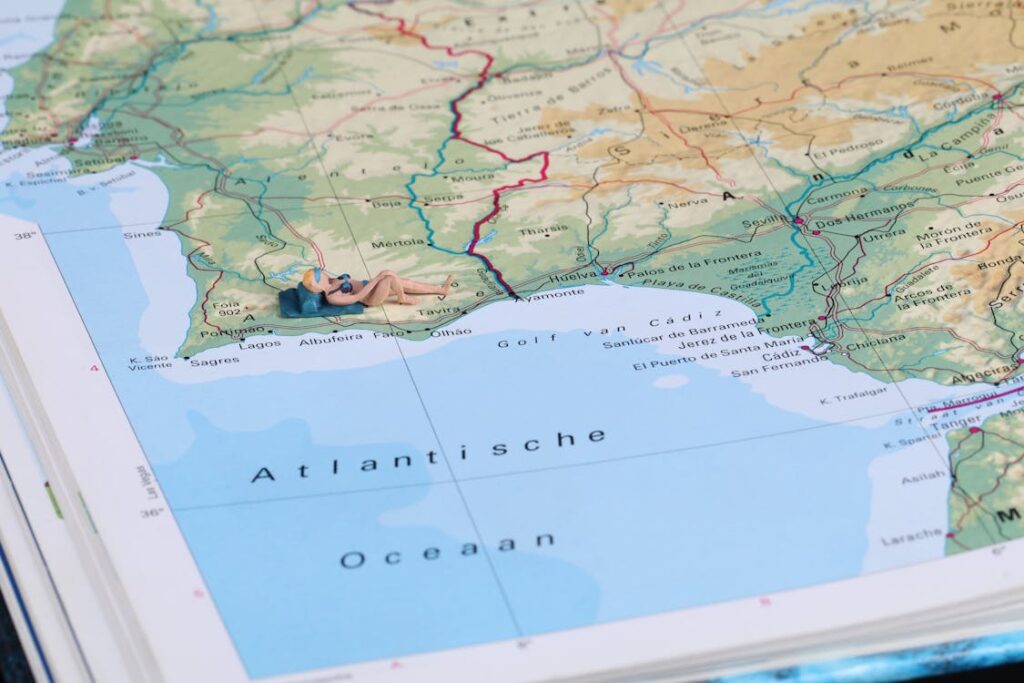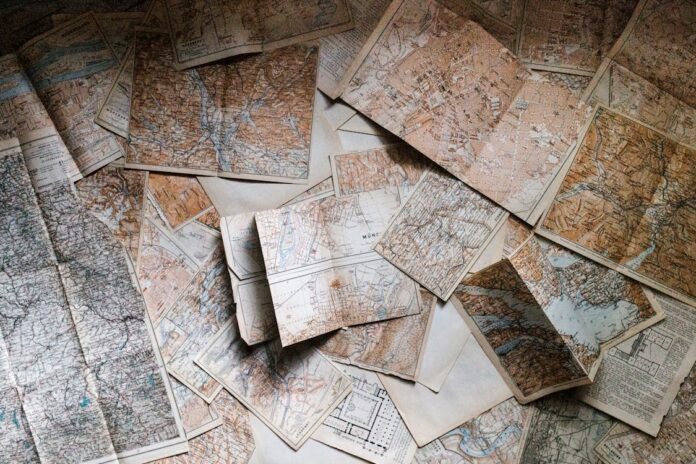In a time in which technology and innovation are guiding towards ùmap our next frontier, one instrument is a reliable guide through the ever-changing world of our lives – the map. From the tangled complex of the ancient cities to the unnoticed algorithms that plot our daily commute maps have been an essential aspect of our lives. They’ve grown from simple maps of the world to digital platforms that support our navigation systems and form our perception about the globe. This blog post is a tribute the oldest of our navigational aids as we explore their evolution, and considering ùmap their role in shaping the future of our world.
The Evolution of Maps: From Antiquity to Digital Cartography
Maps have a lengthy and rich background, which dates back at least early as the sixth century BC. From the beginning of charting seas and stars by various civilizations, such as that of Babylonians as well as the Greeks to the elaborate maps of topography from those of the Golden Age of Netherlandish cartography In this section, we will go deep into the evolution of maps over time.
Ancient Cartography
The first maps were simple but they had a purpose in that they represented the spatial dimension. Mesopotamian clay tablet, referred to in the Imago Mundi, as well as those from the Turin Papyrus from Egypt, are among the earliest examples of early maps.
Medieval and Renaissance Mapping
Medieval mapping was heavily influenced by mythological and religious motifs and often included a mixture of knowledge about geography as well as artistic licence. The Renaissance period’s craving for knowledge that was empirical led to the birth of cartographers who dramatically increased the accuracy and quality of maps.
Enlightenment Cartography
The Age of Enlightenment brought about the revolution of cartography, inspired by scientific exploration and the requirement for accuracy. This period saw the rise of organisations like those of Ordnance Survey in the UK and the Ordnance Survey in America, which pioneered the first large-scale map of the British Isles.
The Digital Cartographic Age
Since the dawn of digital technology cartography has gone beyond paper and ink, and is now accessible to everyone with Internet access. Satellite imagery, GPS technology, and Geographic Information Systems (GIS) are now the foundation of modern cartography.
Types of Maps and Their Utilization
The vast array of maps in our globe isn’t just visual appeal. They serve different functions and are available in a variety of styles. From maps that track the sovereignty of a nation to maps which pinpoint hiking trails knowing their variety can greatly increase our knowledge of the world that surrounds us.
Political Maps
Political maps, with a focus on the man-made borders, impart visual representations of all the states in the world and the capital cities of each. They are vital in understanding international relations. They are used in newsrooms and classrooms around the world.
Topographic Maps
Topographic maps are created to depict three-dimensional (3-D) aspects of Earth’s surface. They are 2-D (2-D) maps, generally aiding surveyors, hikers or outdoor adventurers to plan their routes by including contour lines, which benefit to visualize the elevation of the landscape.
Nautical Charts
Important for navigation on the maritime routes, these charts depict ports, coastlines and areas of shallows, as well as navigational aids such as lighthouses and channel buoys. With a history as long as Ptolemaic cartography the maps were crucial for maritime communes, and are now finding digital representation in modern navigation systems for ships.
Climatic Maps
Climatic maps depict the prevailing and particular climatic conditions throughout an area. They show temperature, humidity winds, atmospheric pressure and precipitation levels. This helps farmers, scientists as well as policymakers comprehend and anticipate the weather patterns as well as their environmental and economic impact.
Economic/Land Use Maps
These maps combine physical geography and human activities and show how resources of the Earth are used. They can be extremely useful in planning urban and regional areas as well as in agricultural strategy and infrastructure development, and provide the necessary basis for sustainable growth.

The Role of Maps in Modern Technology
Maps aren’t just static maps that are hung on the walls or printed on atlases. They’ve been digitalized and integrated into an variety of technologies, transforming our way of life and move around, as well as how we interact with our surroundings.
GIS and Remote Sensing
Geographic Information Systems (GIS) have changed the way we utilize as well as interact with data from spatial sources. GIS software enables users to add various types of geo-referenced data. It also provides advanced visualizations, analysis and the foundation to make informed decisions.
Global Positioning System (GPS)
GPS technologies have not just helped the commuter of every day however, it has also played an important role in security, military as well as in the field of agriculture. The ability to locate precise locations has revolutionized human capabilities in the field of coordination and wayfinding.
Augmented Reality (AR) Mapping
Recent years have seen an exciting advancement in the shape of AR mapping that overlays directions and information using real-time video feeds from smartphones’ cameras. This innovative approach to navigation has already impacted numerous sectors, from travel to delivery services.
Autonomous Vehicles
The rapidly growing area of autonomous cars is as well dependent on cartography. Accurate mapping and real-time data constitute the foundation to their system of navigation. They contribute to the possibility of revolutionizing urban mobility and transportation.
Benefits of Using Maps
The benefits of the incorporation of maps into our lives are numerous in a variety of ways, from improving our physical navigation talent to giving a broader perspective of the global and local settings.
Spatial Cognition
The use of maps can improve the spatial awareness of our brains, which is a ability that helps us be aware of and recall the locations and spatial relationships with physical objects.
Efficient Navigating
The ability to track maps can drastically increase the effectiveness of our travels, helping us reach our destinations without any unnecessary detours or delays.
Environmental Awareness
Maps benefit us gain a deeper understanding of the natural world particularly in the context of conservation, deforestation and other environmental changes.
Disaster Management
Accurate maps are crucial in preparing for and preparing for natural catastrophes. They help determine evacuation routes, support search and rescue efforts and benefit in predicting the spread of fires as well as floods.
Cultural Context
Maps are vital in establishing the historical context for the historical events, movements, the evolution of societies and deliver an easy way to observe the evolution of concepts, languages and changes across time and across space.
The Future of Mapping: Cartography in the 21st Century
The curtain has only risen on the possibilities of mapping technology. By together data-driven methods the future of cartography is set to reach new heights, transforming the human experience and industries in unpredictably ways.
3D Mapping
The 3D map technology is getting more sophisticated, delivering immersive experiences that combine physical digital, virtual, and physical worlds. From capturing urban landscapes to assisting in gaming in virtual reality, 3D maps expand the boundaries for spatial visualization.
Real-Time Data Integration
The shift toward incorporating real-time data on maps offers a range of possibilities, including dynamic navigation, which can avoid traffic congestion, or disaster management and monitoring systems that are able to adapt to changes in the environmental conditions.
Evolution of Internet Mapping Services
The Googles and Apples of the world continue to challenge the boundaries of their mapping services on the internet and integrate services such as reviews, business information and local news, to create the ultimate site for users.
Empowering the Individual
Future mapping technologies could provide more personalised and personalized experiences, giving users with the capability to design their own stories about space specifically tailored to their requirements and preferences.
Cartography for Space Exploration
With our eyes at the stars, the cartography field will play an important role in understanding not only other planets but also navigation across the vast expanses space. Cartography software will be among the more effective tools available to astronauts as we continue to explore and explore other planets.
Conclusion
Maps aren’t just visual tools, they provide a way to understand the world that surrounds us. They’ve charted the path of human progress over the millennia, and will continue to perform this in the current digital age. It is our obligation as navigators of both life and technology to warrant that our cartographic trackers in the right direction. As we look towards into the near future, we do it not only with excitement about the new technologies that are coming but as well with gratefulness for the long heritage of maps that brought us to where we are today. Explore cartographic tools and you’ll be able to discover a vast universe that’s not waiting to be discovered, but eager to be discovered and understood at a variety of levels that go beyond time and space.


